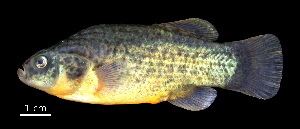Family Cyprinodontidae Phylum Chordata | Scientific name Orestias Rank Genus | |
 | ||
Lower classifications | ||
Orestias is a genus of pupfish. Older systematics classified them into the own family Orestiidae. They are found in lakes, rivers and springs in the Andean highlands of South America, and several species are considered threatened. Depending on exact species, they feed on small crustaceans (such as amphipods and cladocera), insect larvae (such as chironomids), snails, small fish and algae. The largest species can reach a length of 27 cm (11 in), but most remain far smaller. Their most characteristic feature is the absence of the ventral fin.
Contents
- Range and habitat
- Status
- Species
- Agassii species complex
- Cuvieri species complex
- Gilsoni species complex
- Mulleri species complex
- References
Several species are colloquially known as carache.
Range and habitat
Orestias is restricted to freshwater habitats at an altitude of 2,800–4,600 m (9,200–15,100 ft) in the Andes of central and southern Peru, western Bolivia, and northeastern Chile. Of the 45 recognized species, the majority are found in Lake Titicaca (including 23 endemics), with the remaining from other Altiplano lakes, rivers or springs. In addition to differences in feeding, the many species in Lake Titicaca segregate by habitat preference, with some living among totora reeds, some among submerged macrophytes, some at the bottom in water too deep for macrophytes (depths below 10 m or 33 ft), and some pelagically in the open water. Orestias species found elsewhere than Lake Titicaca often have very small ranges.
Status
Many species of the genus became rare in recent decades due to competition with introduced fish species, pollution, and human activities at the lakes. One species—the Titicaca Orestias (Orestias cuvieri)—was last seen in 1939 and is probably extinct; several others are known to have highly restricted ranges.
Species
There are currently 45 recognized species in this genus, divided by American ichthyologist Lynne R. Parenti in 1984 depending on their relationships into four species complexes. The genus is estimated to be 5 million years old, with a significant diversification occurring within the last one million years. Lüssen (2003) researched the phylogeny of several species including mtDNA sequence data; because hybridization is known to occur (Villwock 1964, Parenti 1984), mtDNA data cannot be relied upon on its own to resolve the evolution of this genus.
